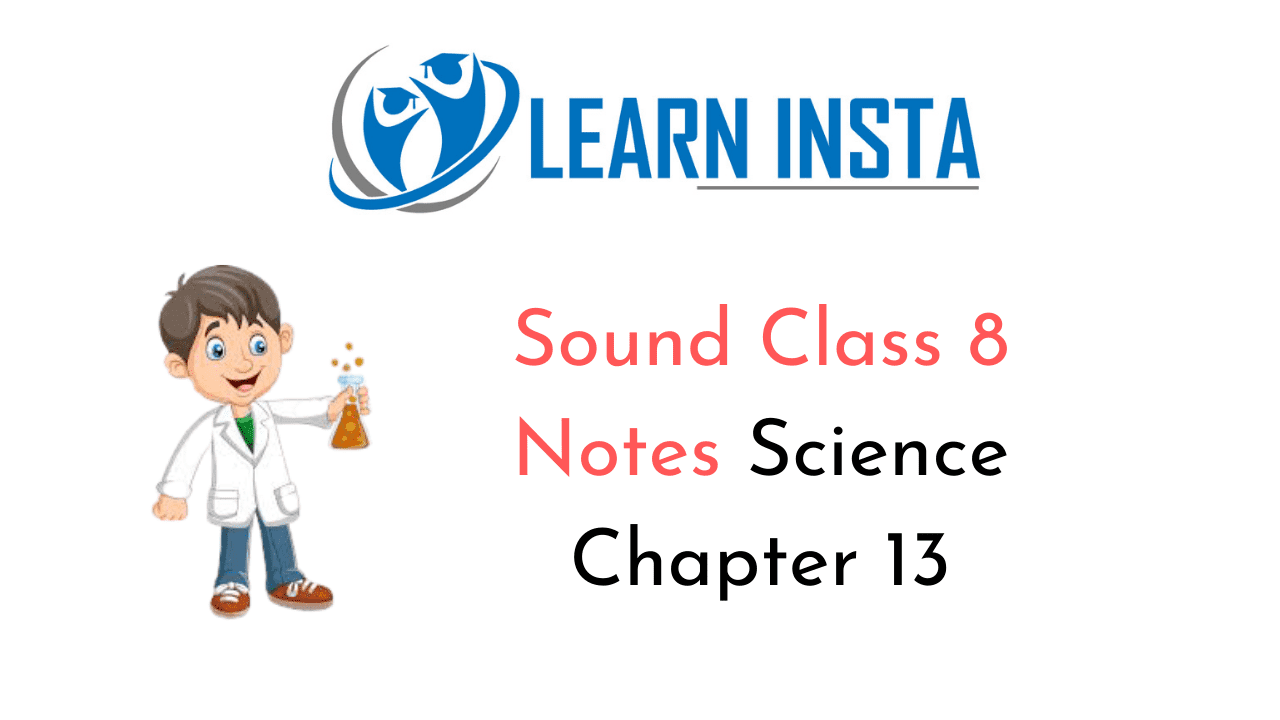
On this page, you will find Sound Class 8 Notes Science Chapter 13 Pdf free download. CBSE NCERT Class 8 Science Notes Chapter 13 Sound will seemingly help them to revise the important concepts in less time.
CBSE Class 8 Science Chapter 13 Notes Sound
Sound Class 8 Notes Understanding the Lesson
1. Sound is defined as a form of energy that travels through medium in the form of vibrations.
2. A sound can be produced by:
- beating
- rubbing
- blowing
- plucking
3. The movement that produces sound in rapid to and fro motion is called vibration.
4. Sound requires medium to travel. Sound can travel through solids, liquids and gases but not through vacuum.
5. Sound travel fastest in solid and slowest in gases.
6. In human beings, the sound is produced by the voice box or the larynx.
7. Voice box is located at the upper end of the windpipe.
8. The eardrum senses the vibration of sound and sends the signal to the brain. This process is called hearing.
9. A vibration has three important characteristics – frequency, amplitude and time period.
10. Frequency is defined as the number of vibrations made by a vibrating body in one second. Its unit is hertz (Hz).
11. Amplitude is defined as the maximum extent to which a vibrating body can vibrate.
12. Time period is defined as the time taken by a vibrating body for one complete vibration.
13. Loudness is the characteristic of sound that enables us to distinguish a loud sound from low sound.
14. Pitch is a characteristic of sound that enables us to distinguish a shrill sound from the grave (hoarse) sound.
15. The term quality is defined as the characteristic of sound by virtue of which we can easily differentiate the two sounds of same pitch.
16. The unwanted and unpleasant sound that causes discomfort is called noise.
17. The sound that we enjoy from musical instruments are called musical sound.
18. Presence of excessive or unwanted sounds in the environment is called noise pollution.
19. Plantation on the roadside and elsewhere can reduce noise pollution.
Class 8 Science Chapter 13 Notes Important Terms
Amplitude: is defined as the maximum extent to which a vibrating body can vibrate.
Audible: The type of sounds which we are able to hear are called audible sounds.
Eardrum: Eardrum is a thin membrane through which the sound waves passed.
Hertz: The frequency is expressed in hertz (Hz).
Larynx: Larynx is the organ which produces sound in the human being. It is also called voice box.
Loudness: Is the characteristic of sound that enables us to distinguish a loud sound from low sound.
Noise: The sound which are unpleasant to hear are termed as noise.
Oscillation: The to and fro motion of the vibrating particles about its mean position is called oscillation.
Pitch: The characteristic of sound by which we distinguish between different sounds of the same loudness is known as pitch.
Shrillness: The property of sound that depends upon frequency of vibrating object is known as shrillness.
Time period: The time taken by the bob of the pendulum to complete one oscillation, is called its time period.
Ultrasonic sound: The sound which have frequencies greater than 20,000 Hz is called ultrasonic sound.
Vibration: The movement of a body from one extreme position to the other is termed as vibration.
Voice box: It is that part by which sound is produced in humans.
Windpipe: The pipe which connects the larynx with the lungs is called windpipe.